A Guide to Archaeological Site of Troy in Turkey
If there is a place where myth and reality intersect, it is undoubtedly Troy. This ancient city, which hosted the Trojan War described in Homer's epics, welcomes its visitors today on the borders of Çanakkale, near Tevfikiye Village. Offering a fascinating experience with both its ancient walls and cultural heritage, the Troy Archaeological Site is not just an archaeological site, but one of the turning points of human history. In this guide, you will find many details from Troy's historical layers to its mythological stories, from its museum to transportation information, from the entrance fee to the places to be seen in the vicinity. If you are planning a trip to Troy, this article will be a comprehensive and reliable resource for your journey.
Troy's Historical Depth and Cultural Heritage
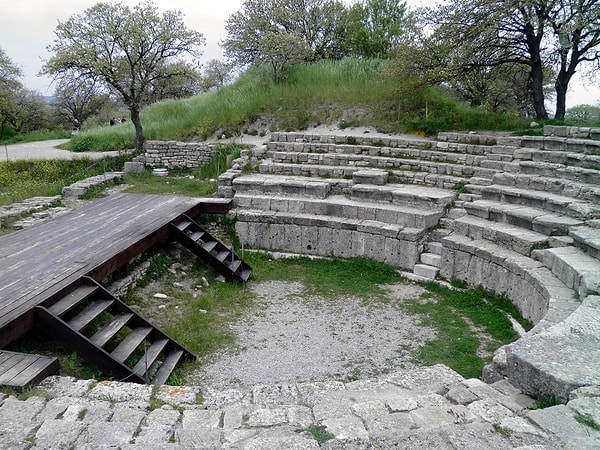
The Troy Archaeological Site, one of the oldest settlements in Anatolia, is one of the most remarkable cities in human history, not only as an archaeological site but also as a mythological, cultural and literary phenomenon. Located within the borders of Tevfikiye Village in Çanakkale province, this unique site offers an uninterrupted settlement history of approximately 5,000 years. Troy is not only famous for Homer's epic 'The Iliad', but also the scene of the most memorable ancient battle in the memory of the Western world.
Historical Layers and Archaeological Significance of Troy
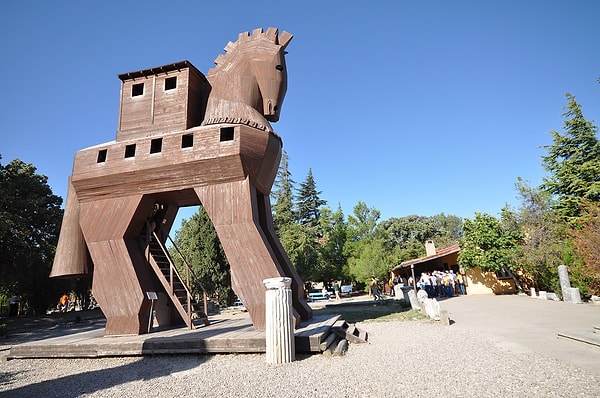
Troy consists of nine main archaeological layers (Troy I - Troy IX). These layers show that the city was rebuilt and used by different civilisations in the historical process. Each layer sheds light on different periods with its unique architectural style, building materials and lifestyle:
Troy I - Troy V (3000 - 1900 BC): Early Bronze Age settlements. The use of wood and mudbrick is common.
Troy VI - Troy VIIa (1700 - 1200 BC): One of the most brilliant periods. These layers are considered to be the period when the Trojan War took place.
Troy VIII - Troy IX (700 BC - 500 AD): Contains traces of Hellenistic, Roman and Byzantine periods.
The excavations started by Heinrich Schliemann in the 1870s proved that Troy, which had long been regarded as a myth, actually existed. Schliemann claimed to have discovered the famous ‘Treasure of Priamos’ during his excavations here, and these finds became one of the most controversial artefacts in the history of archaeology.
Prominent Structures in the Troy Archaeological Site
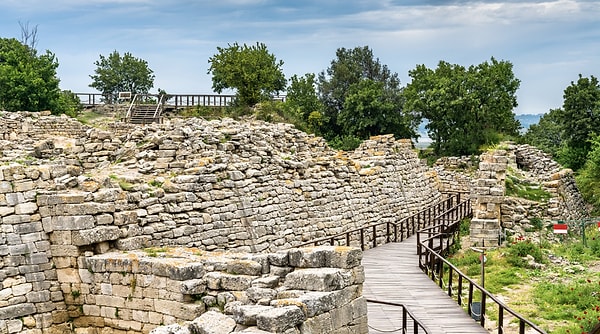
Troy is almost like an open-air laboratory with its ancient city ruins. The main structures that must be seen during the trip are as follows:
City Walls and Monumental Gates: Especially the huge stone walls of the Troy VI period provide information about the defence architecture of the period.
Temple of Athena: This sanctuary, dating back to the Troy VIII period, is the religious centre of the city.
Megarons (House Buildings): These rectangular planned houses give an idea about the social life of the people.
Odeon (Small Theatre): This small-scale theatre, belonging to the Roman period, shows the cultural life of Troy.
Schliemann's Trench: This is where the excavations started; it is a unique spot where you can clearly observe the different settlement layers.
Trojan Horse Replica: This symbolic structure, located at the entrance, is one of the most well-known elements of the mythological narrative. It is especially the centre of attention for photography lovers.
Troy Museum: A Journey in the Heart of Archaeology
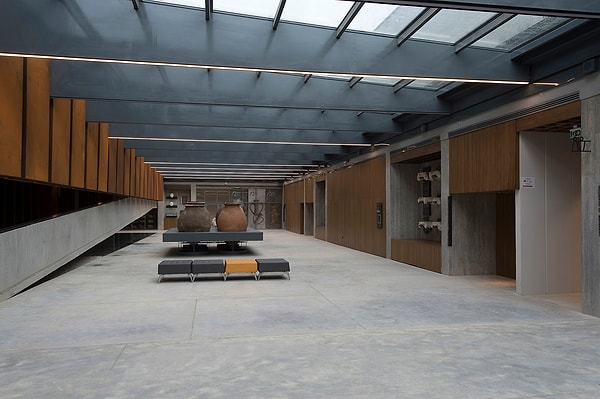
Opened to visitors in 2018, the Troy Museum is located at the entrance of Tevfikiye Village, just a few steps away from the archaeological site. It is one of the most comprehensive archaeological museums in the region with an exhibition area of approximately 3,000 m².
Museum Content:
The museum is spread over four floors and is divided chronologically and thematically:
Prehistoric periods of Troy
The Trojan War and Homer's narratives
Roman and Byzantine settlements
Perception of Troy during the Ottoman period
The development of archaeology and the role of Schliemann
Equipped with modern exhibition techniques, the museum also features interactive digital screens, a children's section, a cafeteria and a souvenir shop. For everyone visiting the Troy Archaeological Site, a visit to the museum is an indispensable stop that completes the experience.
Mythological Narratives: Goddesses, Paris and the Fuse of War

Troy is unique not only as a historical centre but also as a mythological centre. One of the most famous narratives is the ‘most beautiful goddess’ debate between Aphrodite, Athena and Hera. Paris, who was chosen as the judge in this contest, chose Aphrodite; Aphrodite promised Paris Helen, Queen of Sparta, as a reward. Paris' abduction of Helen leads to the outbreak of the Trojan War.
This narrative is both one of the cornerstones of ancient Greek mythology and a source of nourishment for Western literature and art for hundreds of years.
How to Get to Troy?
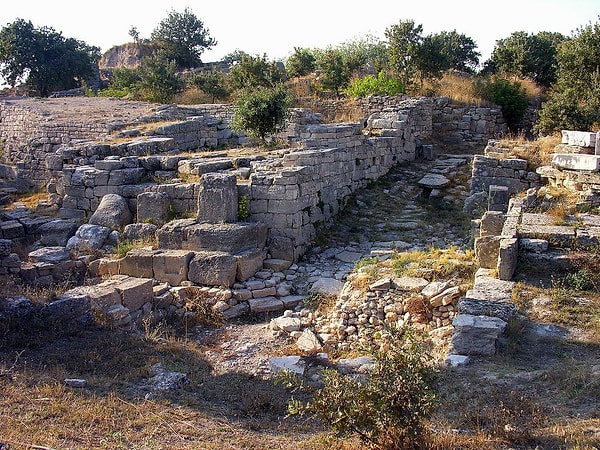
Troy Archaeological Site is approximately 30 kilometres from Çanakkale city centre. Transportation is quite easy:
🚗 By Private Car:
It takes about 6 hours from Istanbul to Troy.
Tekirdag - Gelibolu route and reach Çanakkale by ferry.
You can reach Troy by following the Tevfikiye Village signs from Çanakkale centre.
🚌 Public Transport:
Tevfikiye minibuses depart from Çanakkale Bus Station at certain hours.
There are also daily tours specially organised for the region and sightseeing services covering the Troy Museum.
It is recommended to plan in advance for public transport and accommodation in the summer months.
Entrance Fee and Visit Information to Troy
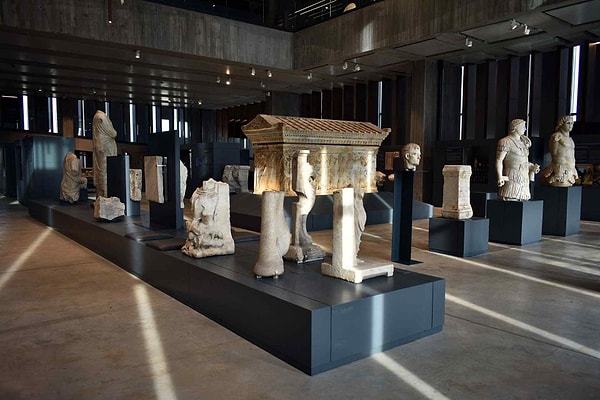
Opening/Closing Hours
Opening Hours: 08:30
Closing Hours: 20:00
Box Office Closing Hours: 19:30
Entrance Fee to the Archaeological Site of Troy
Entrance Fee: 23 Euros
MuseumPass is valid
Since the Troy Archaeological Site is spread over a large area, it is recommended to allocate at least 1.5 - 2 hours to visit.
Places to Visit and Recommended Activities around Troy
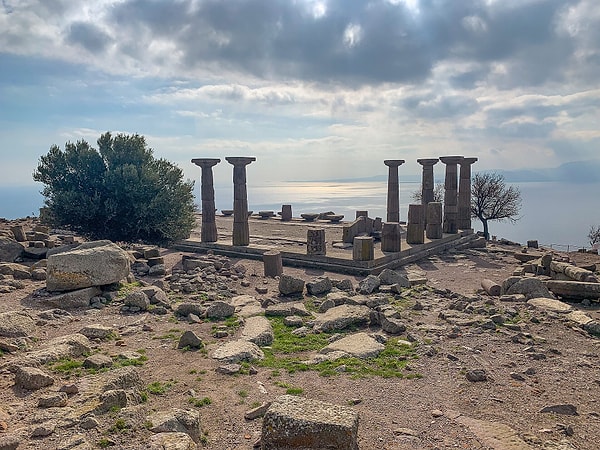
When you visit Troy, be sure to explore the rich cultural and natural areas in the surrounding area:
Çanakkale Centre: Aynalı Bazaar, Martyrs' Monument, Naval Museum and a walk on the promenade.
Assos (Behramkale): This ancient harbour town, full of traces of Aristotle, is about 1.5 hours away.
Mount Ida National Park: Ideal for hiking, camping and waterfall trips.
Bozcaada & Gökçeada: Accessible by ferry, these islands combine history, viticulture and sea holidays.
Sunset on Hisarlık Hill: Watching the sunset among the ruins of Troy offers a mystical experience that combines past and present.
Keşfet ile ziyaret ettiğin tüm kategorileri tek akışta gör!

Send Comment